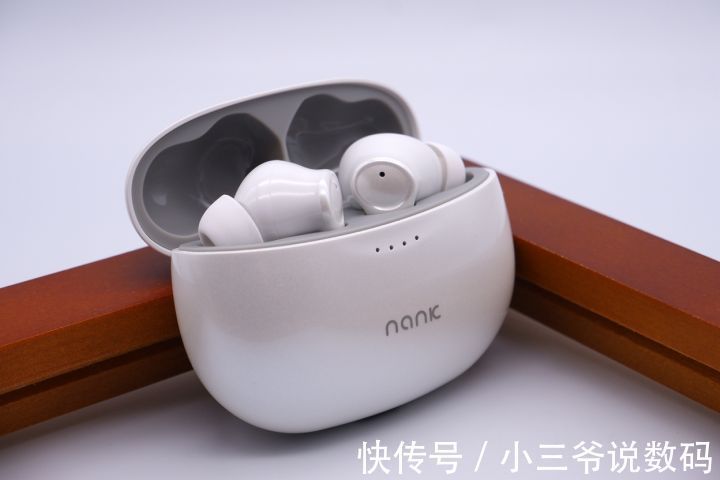дҪҝз”ЁFlutter|дҪҝз”ЁFlutter + V8/JsCoreејҖеҸ‘е°ҸзЁӢеәҸеј•ж“ҺпјҲдёҖпјү
дј—жүҖе‘ЁзҹҘпјҢе°ҸзЁӢеәҸжҳҜз”ұHTMLж ҮзӯҫжқҘејҖеҸ‘еҺҹз”ҹ组件пјҢйӮЈд№ҲйҰ–е…ҲйңҖиҰҒе°ҶHTMLеҒҡи§ЈжһҗпјҢиҝҷйҮҢжҲ‘们е°ҶHTMLйҖҡиҝҮnodeи„ҡжң¬и§ЈжһҗжҲҗJSONеӯ—з¬ҰдёІпјҢеҶҚз”ЁDartжқҘи§ЈжһҗJSONпјҢжҳ е°„еҜ№еә”зҡ„ж ҮзӯҫеҲ°flutterзҡ„组件гҖӮиҝҷйҮҢе…Ҳз®ҖеҚ•д»Ӣз»Қе®һзҺ°зҡ„еҠҹиғҪд»ҘеҸҠеұ•зӨәж•ҲжһңпјҢеҗҺз»ӯеҶҚиҜҰз»Ҷд»Ӣз»ҚгҖӮ
1 HTMLйғЁеҲҶ
дёәдәҶй«ҳж•Ҳи§ЈжһҗпјҢзӣҙжҺҘз”Ёflutterзҡ„组件еҗҚеңЁHTMLж–Ү件дёҠејҖеҸ‘
- ж–Ү件зӣ®еҪ•еҰӮдёӢпјҡ

ж–Үз« еӣҫзүҮ
image
- config
{
"navigationBarTitleText": "",
"backgroundColor": "#eeeeee",
"enablePullDownRefresh": true
}
- HTML
@import "home.css";
{{item.title}}
{{item.publisher}}
{{item.summary.substring(0, 20) + '...'}}
- cssж ·ејҸ
/* home */
.btn-container{
margin-top:10;
margin-left: 10;
margin-right: 10;
}.raised-button {
color: white;
}.image-container {
width: 100px;
height:100px;
padding: 5;
}.column-text {
cross-axis-alignment: start;
}.text-title {
font-size: 14px;
color: black;
}.text-publisher {
font-size: 12px;
color: gray;
}.text-summary {
font-size: 12px;
color: gray;
}- jsдәӨдә’
/** home */
Page({
/**
* йЎөйқўж•°жҚ®
*/
data: {
list: [],
},/**
* йЎөйқўеҠ иҪҪж—¶и§ҰеҸ‘гҖӮдёҖдёӘйЎөйқўеҸӘдјҡи°ғз”ЁдёҖж¬ЎпјҢеҸҜд»ҘеңЁ onLoad зҡ„еҸӮж•°дёӯиҺ·еҸ–жү“ејҖеҪ“еүҚйЎөйқўи·Ҝеҫ„дёӯзҡ„еҸӮж•°гҖӮ
*/
onLoad(e) {
cc.setNavigationBarTitle({
title: 'Pythonзі»еҲ—дёӣд№Ұ'
});
cc.showLoading({});
this.doRequest(true);
},doRequest(isOnload) {
let that = this;
cc.request({
url: 'https://douban.uieee.com/v2/book/search?q=python',
data: {},
header: {},
method: 'get',
success: function (response) {
that.setData({
list: response.body.books
});
cc.showToast({
title: 'еҠ иҪҪжҲҗеҠҹ'
});
},
fail: function (error) {
console.log('request error:' + JSON.stringify(error));
cc.showToast({
title: 'еҠ иҪҪеӨұиҙҘ'
});
},
complete: function () {
console.log('request complete');
if (isOnload) {
cc.hideLoading();
} else {
cc.stopPullDownRefresh();
}
}
});
},onItemClick(e) {
var item = this.data.list[e.target.dataset.index];
cc.navigateTo({
url: "detail?item=" + JSON.stringify(item)
});
},onPullDownRefresh() {
console.log("onPullDownRefresh");
this.doRequest(false);
},/**
* йЎөйқўеҚёиҪҪж—¶и§ҰеҸ‘гҖӮеҰӮcc.redirectToжҲ–cc.navigateBackеҲ°е…¶д»–йЎөйқўж—¶гҖӮ
*/
onUnload() {}
});
2 жёІжҹ“ж•Ҳжһң image 3 组件йғЁеҲҶ зӣҙжҺҘдҪҝз”Ёflutterзҡ„组件
1.1 组件 1.1.1 еёғеұҖзұ»з»„件
- зәҝжҖ§еёғеұҖпјҲrowе’Ңcolumnпјү
- еј№жҖ§еёғеұҖпјҲflexпјү
- жөҒејҸеёғеұҖпјҲwrapгҖҒflowпјү
- еұӮеҸ еёғеұҖпјҲstackгҖҒpositionedпјү
- еҜ№йҪҗдёҺзӣёеҜ№е®ҡдҪҚпјҲalignпјү
- text
- image
- raisedbutton
- circularprogressindicator
- еЎ«е……пјҲpaddingпјү
- е°әеҜёйҷҗеҲ¶зұ»е®№еҷЁпјҲconstrainedboxзӯүпјү
- иЈ…йҘ°е®№еҷЁпјҲdecoratedboxпјү
- еҸҳжҚўпјҲtransformпјү
- containerе®№еҷЁ
- еүӘиЈҒпјҲclipпјү
- singlechildscrollview
- listview
- gridview
4.1 з•Ңйқў 4.1.1 дәӨдә’
- cc.showToast
- cc.showLoading
- cc.hideToast
- cc.hideLoading
- ...
- cc.setBackgroundColor
- cc.setNavigationBarTitle
- cc.setNavigationBarColor
- cc.startPullDownRefresh
- cc.stopPullDownRefresh
д»ҘдёҠHTMLдёӯзҡ„дҫӢеӯҗ
5 жЎҶжһ¶ 5.1 иҜӯжі•еҸӮиҖғ 5.1.1 ж•°жҚ®з»‘е®ҡ
HTML дёӯзҡ„еҠЁжҖҒж•°жҚ®еқҮжқҘиҮӘеҜ№еә” Page зҡ„ dataгҖӮ
еҸҢеӨ§жӢ¬еҸ· {{}} е°ҶеҸҳйҮҸеҢ…иө·жқҘ
{{message}} Page({
data: {
message: "hello world"
}
})5.1.2 еҲ—иЎЁжёІжҹ“
- cc:for
еңЁз»„件дёҠдҪҝз”Ё cc:for жҺ§еҲ¶еұһжҖ§з»‘е®ҡдёҖдёӘж•°з»„пјҢеҚіеҸҜдҪҝз”Ёж•°з»„дёӯеҗ„йЎ№зҡ„ж•°жҚ®йҮҚеӨҚжёІжҹ“иҜҘ组件гҖӮ
й»ҳи®Өж•°з»„зҡ„еҪ“еүҚйЎ№зҡ„дёӢж ҮеҸҳйҮҸеҗҚй»ҳи®Өдёә indexпјҢж•°з»„еҪ“еүҚйЎ№зҡ„еҸҳйҮҸеҗҚй»ҳи®Өдёә item
{{index + '-' + item.name}}
Page({
data: {
array: [{
name: 'first',
}, {
name: 'second'
}]
}
})
дҪҝз”Ё cc:for-item еҸҜд»ҘжҢҮе®ҡж•°з»„еҪ“еүҚе…ғзҙ зҡ„еҸҳйҮҸеҗҚпјҢ
дҪҝз”Ё cc:for-index еҸҜд»ҘжҢҮе®ҡж•°з»„еҪ“еүҚдёӢж Үзҡ„еҸҳйҮҸеҗҚпјҡ
{{idx + ' - ' + itemName.name}}
- cc:for еөҢеҘ—
{{'i * j = ' + i * j}}
Page({
data: {
array1: [1, 2, 3, 4, 5, 6, 7, 8, 9],
array2: [1, 2, 3, 4, 5, 6, 7, 8, 9]
}
})6 API жј”зӨә

ж–Үз« еӣҫзүҮ
image 7 е®һж—¶и°ғиҜ• image
- жәҗз Ғең°еқҖпјҡдј йҖҒй—Ё
- зі»еҲ—ж–Үз« пјҡ
гҖҗдҪҝз”ЁFlutter|дҪҝз”ЁFlutter + V8/JsCoreејҖеҸ‘е°ҸзЁӢеәҸеј•ж“ҺпјҲдёҖпјүгҖ‘гҖҠдҪҝз”ЁFlutter + V8/JsCoreејҖеҸ‘е°ҸзЁӢеәҸеј•ж“ҺпјҲдёүпјүгҖӢ
жҺЁиҚҗйҳ…иҜ»
- з”ұжө…е…Ҙж·ұзҗҶи§ЈAOP
- гҖҗиҜ‘гҖ‘20дёӘжӣҙжңүж•Ҳең°дҪҝз”Ёи°·жӯҢжҗңзҙўзҡ„жҠҖе·§
- mybatisplusеҰӮдҪ•еңЁxmlзҡ„иҝһиЎЁжҹҘиҜўдёӯдҪҝз”ЁqueryWrapper
- MybatisPlus|MybatisPlus LambdaQueryWrapperдҪҝз”Ёintй»ҳи®ӨеҖјзҡ„еқ‘еҸҠи§ЈеҶі
- MybatisPlusдҪҝз”ЁqueryWrapperеҰӮдҪ•е®һзҺ°еӨҚжқӮжҹҘиҜў
- iOSдёӯзҡ„Block
- LinuxдёӢйқўеҰӮдҪ•жҹҘзңӢtomcatе·Із»ҸдҪҝз”ЁеӨҡе°‘зәҝзЁӢ
- дҪҝз”ЁcomposerиҮӘеҠЁеҠ иҪҪзұ»ж–Ү件
- android|android studioдёӯndkзҡ„дҪҝз”Ё
- дҪҝз”ЁеҚҸзЁӢзҲ¬еҸ–зҪ‘йЎөпјҢи®Ўз®—зҪ‘йЎөж•°жҚ®еӨ§е°Ҹ











